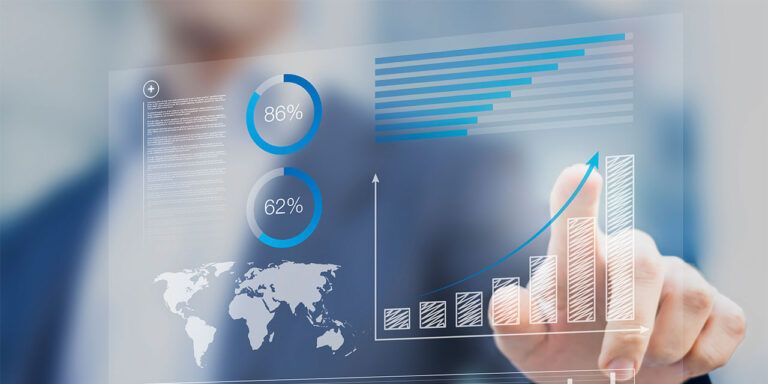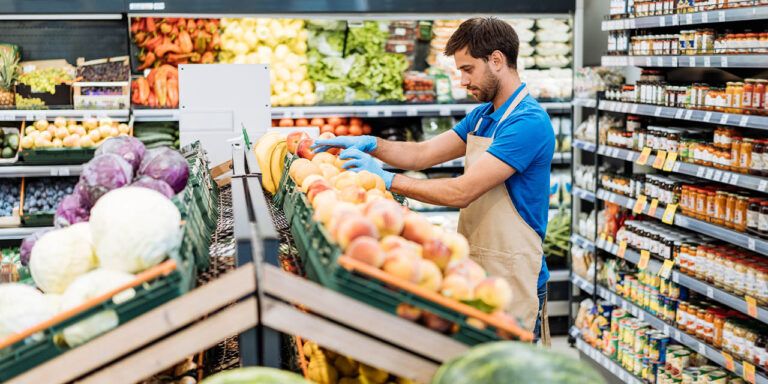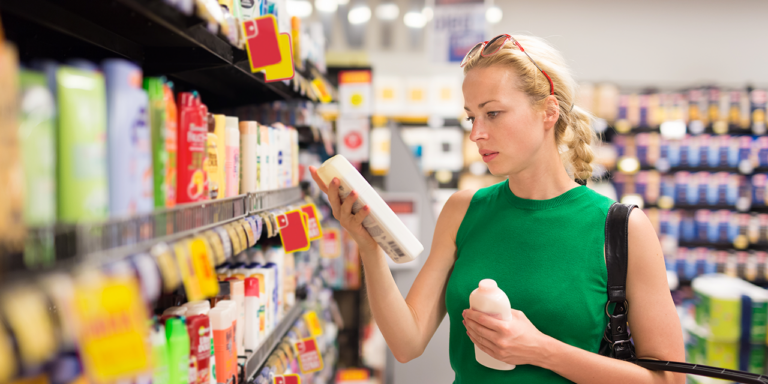The high costs of food waste: Smarter grocery practices for Earth Day
Apr 21, 2025 • 4 min
The scale of global food waste is daunting. A third of all food goes to waste, costing an estimated $940 Billion every year.
When grocery retailers throw away unsold food, they face a double penalty: environmental harm plus significant financial losses. We can improve sustainability and business profitability by addressing this challenge.
When Champions 12.3 analyzed food waste reduction investments, looking at 1,200 business sites in 17 countries and more than 700 companies, they found that for every dollar invested in preventing food waste, the site recouped $14. Reducing food waste is an investment for your bottom line and for the planet.
This Earth Day, take the opportunity to consider your food waste prevention strategies and what you can do to further reduce food waste at your stores.
The financial costs of food waste
Producing food requires significant resources. Farm and grazing land takes up about 44% of habitable land on Earth — meanwhile, 70% of the fresh water used goes to agriculture. When so much of the food we produce goes to waste, all those resources used to create that food go to waste as well.
On top of all that, the wasted food then decomposes, creating greenhouse gases. Food waste contributes approximately 8-10% of global greenhouse gas emissions each year.
Unsold products are only one of the many costs associated with waste. When products spoil, they also create disposal costs, as well as financial and environmental costs related to the transportation and storage of those products that never get eaten. And then there’s the cost of labor to stock the products and toss them out when they go bad.
These combined costs can amount to twice as much as retail profit margins in the grocery sector. Fresh departments face particularly tough challenges with varying expiration dates and quality fluctuations. Traditional manual ordering methods often create a harmful cycle for your bottom line as well as the planet: stockouts followed by overordering, which leads to waste.
How RELEX helps grocery retailers cut waste costs
The grocery industry faces unique inventory challenges, especially with fresh products. Traditional methods often rely on manual calculations that can’t handle the complexity involved. This is where technology becomes a powerful ally in the fight against food waste.
AI-driven technology transforms reactive processes into optimized inventory management and proactive waste prevention. Instead of responding to problems after they occur, retailers can anticipate and prevent issues before they lead to waste. This shift from reactive to proactive is a fundamental change in how grocers approach inventory.
Fresh optimization
By aligning fresh product inventory with precise demand forecasts, fresh optimization minimizes spoilage costs. Modern forecasting capabilities predict demand with remarkable precision, far beyond what humans can calculate manually. Machine learning algorithms analyze years of sales data alongside external factors like weather, local events, and other trends that might impact purchasing.
For fresh items, these systems incorporate seasonality patterns, expiration, and customer substitution behaviors that make fresh demand uniquely complex. The result? Retailers implementing these technologies typically see a 10-40% reduction in food spoilage.
RELEX mobile solutions
Empower store staff to manage fresh products effectively with an intuitive interface, reducing handling errors and waste. This cuts operational costs linked to inventory, food disposal, and spoilage, while shifting staff time from manual ordering to value-added analysis.
An example: Partnering with RELEX, one major online grocery retailer broke their cycle of reactive ordering by automating order proposals through customized business rules. They eliminated their pattern of Monday sellouts followed by midweek excess, saved 4-5 hours daily per inventory planner, and created a more responsive, adaptable inventory system.
CO2 analytics
Now part of the core F&R package, CO2 Analytics provides insights into carbon emissions from supply chain activities, empowering grocers to meet sustainability targets and reduce emissions-related costs. When order accuracy increases, retailers need fewer trucks to transport excess inventory, lowering their carbon footprint. The resulting waste reduction simultaneously improves both financial and environmental performance.
CO-MRP
RELEX’s Coordinated Multi-echelon Replenishment Planning (CO-MRP) enables coordinated ordering to optimize truck loads, cut empty shipping, and lower transportation costs. This supports sustainability by reducing transport-related emissions while keeping products moving through the supply chain efficiently. Dynamic inventory optimization creates a continuous balancing act between having enough product to satisfy customers and avoiding excess that leads to waste.
RELEX Diagnostics
RELEX Diagnostics enhances visibility into inventory, stockouts, spoilage, and excess, providing actionable insights to reduce lost sales and holding costs. By identifying waste patterns and their root causes, retailers can implement targeted solutions that address the fundamental issues contributing to waste. This comprehensive approach ensures that waste reduction efforts are coordinated across all operations rather than creating isolated improvements.
Using our power to reduce waste and costs
Food waste reduction represents one of the most significant opportunities to simultaneously improve business performance and environmental outcomes.
When we each use our unique power — whether through technology, operational excellence, or consumer choices — we create meaningful change for our shared planet. RELEX’s technology empowers retailers to prevent waste before it occurs, creating a win-win scenario where financial performance improves alongside progress toward environmental objectives.
Join the movement toward smarter grocery practices that benefit both planet and profit.



